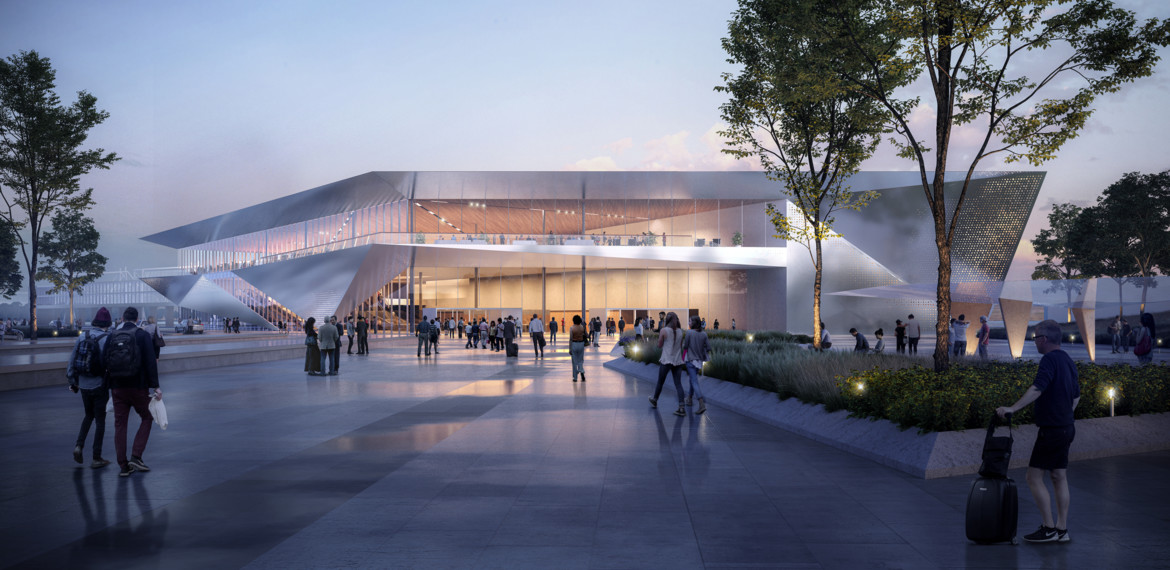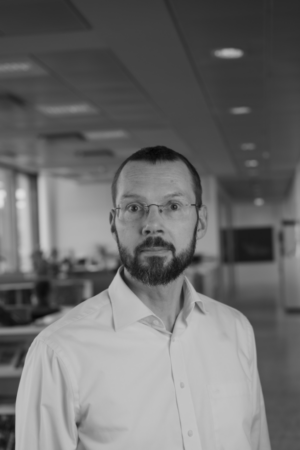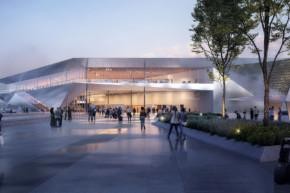Functional, efficient, strong – and sensitive
The new passenger terminal in the Port of Turku represents, in the words of its main designer Tuomas Silvennoinen, poetic rationalism. It works like a machine, but also speaks to its users.

Tuomas Silvennoinen, the main designer of Turku’s new passenger terminal from PES Architects, began to think about ORIGAMI for the first time during the Christmas holidays in 2021. Soon thereafter he sat down at a desk together with his colleague, architect Pekka Mäkelä.
“In a terminal building, functionality lies at the core of everything. We started with the way the principal traffic flows should be directed, and the building itself began to emerge around them”, Mr Silvennoinen describes.
“A good terminal building works like a machine”, Mr Mäkelä adds.
“But nobody wants to just stay inside a machine. The building also needs to speak to people”, Mr Silvennoinen stresses.
Life-size architecture
As stated in the Finnish Architectural Review, the works of Mr Silvennoinen combine large scale with sensitivity in a fine way. He himself describes his style as poetic rationalism.
“My style always stems from what I’m doing at the time, the client’s wishes, and the basic function of the building. At the same time it is important to remember that architecture is made for people. I also want to keep in mind an individual user of the building and their world. I actively practice such sensitivity by designing, for example, detached houses and summer houses in addition to other projects.”
Mr Mäkelä says that, among other things, solutions in accordance with sustainable development are particularly important to him.
“For example, I want the furnishing of the buildings to be timeless, so that it need not be redone regularly.”

Scene of many encounters
Both Silvennoinen and Mäkelä have plenty of experience in terminal buildings. Mr Silvennoinen, for example, has been employed for years by the expansion of the Helsinki Airport, and PES Architects has also designed train and metro stations. The architects have designed together West Terminal 2 in the Jätkäsaari harbour in Helsinki.
“Terminals are also interesting because of their general atmosphere. A terminal is a place for departure or homecoming, a scene for farewell or reunion”, Mr Silvennoinen contemplates.
In addition to Finland, Mr Silvennoinen has designed many large works e.g. in China. He is also the main designer for the new Music Hall Fuuga being built in Turku.
The plans could be modelled
Silvennoinen and Mäkelä commend the arrangements for the architectural competition of the passenger terminal in Turku.
“It was an excellent solution by the Port of Turku to provide the competitors with the chance to model together with Ramboll’s team the traffic flows of the terminal and the time it takes for people to move in the building. That allowed us to adjust our solutions along the way”, Mr Mäkelä says.
“Due to the increase in the prices of construction materials it was necessary to reduce the original scale of ORIGAMI by 20 per cent. According to the architects, the building has nevertheless retained its basic appearance and functionality well.

There are still things left to do
The building is flexible and modifiable, and the interior is airy. The wooden wall in the entrance lobby adds warmth to the world of glass, steel and aluminium. The mood in the building becomes more peaceful when moving up, and there is a nice view to the sea. The terraces in conjunction with the lobby offer seats with a great view toward Linnanniemi (Evaluation protocol of the architectural competition).
Silvennoinen and Mäkelä have already completed most of their design work, but there is still something left to do.
“We are now preparing implementation plans for contract tenders. We will also participate in the construction phase; we will carry out supervision of construction and make specifying plans where necessary”, Mr Mäkelä says.
Text: Matti Välimäki
Photos: PES-Architecs Ltd

